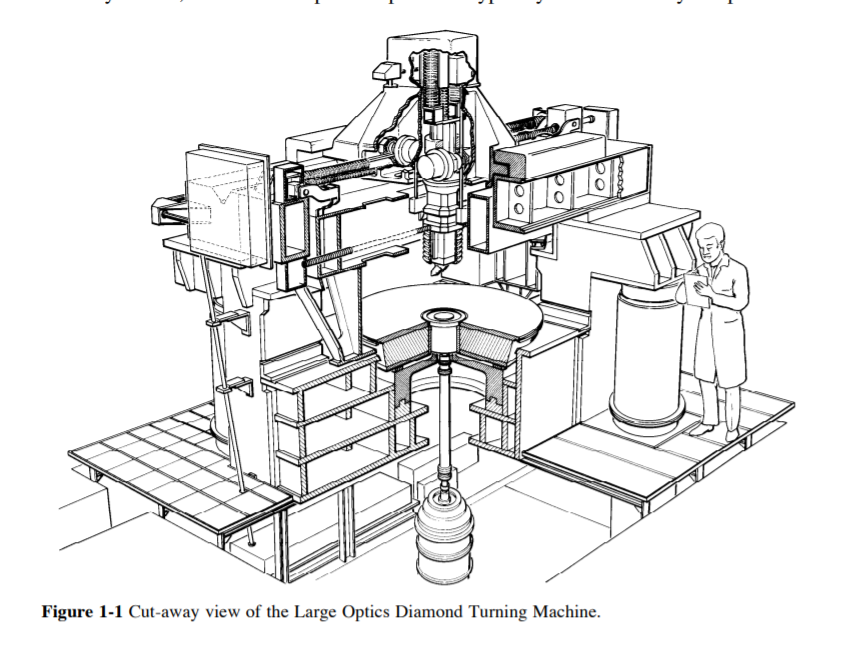Precision machine design
- tags MIT Machine Design
- Resources
- Principles and techniques for designing precision machines Hale Layton Alternate
- Design and testing of a fast tool servo
- High performance slide and drive Donaldson
- Motion control system of large optics diamond turning Howard K McCue
- Rapid mapping of volumetric errors laser ball bar [Krulewich, Hale and Yordy, 1995]
- Notes
- A significant development was the interferometer by Albert A. Michelson in 1881 for which he received the Nobel prize in 1907. The interferometer is the instrument that transfers the international standard of length into physical measurements.

- The least program increment for the computer control system is 0.1 min (2.54 nm). It is quite impressive to see the machine faithfully execute such an unbelievably small move. There are several keys to achieving such fine motion control. One of course is highresolution position feedback, but equally important is high-quality velocity feedback. Very high servo loop stiffness is possible by cascading the position and velocity loops, by compensating both loops with lead-lag filters and by using notch filters at mechanical resonances. The servo actuator consists of a brush-type DC servo motor driving through friction between a 2 inch steel roller and a 1 inch wide steel bar. A friction drive (or capstan) provides good mechanical stiffness, low parasitic motion and very low hysteresis, but lacks the mechanical advantage of a ball screw. The brush-type DC tachometer has a very high voltage constant and is tightly coupled mechanically to the servo motor yet electro-magnetically isolated. This package is thermally isolated from the machine with a double-pass heat exchanger of temperature-controlled water. The compensation circuitry is specially designed for low noise, and the servo drive amplifiers are linear rather than PWM (pulse width modulated). All the bearings for the slides and capstans are hydrostatic oil or air for the case of the tool bar. This eliminates all mechanical friction in the motion control system except for the motor and tachometer brushes.
- Precision machine design
Notes mentioning this note
Precision machine design
tags MIT Machine Design Resources Principles and techniques for designing precision machines Hale Layton Alternate Design and testing of a...